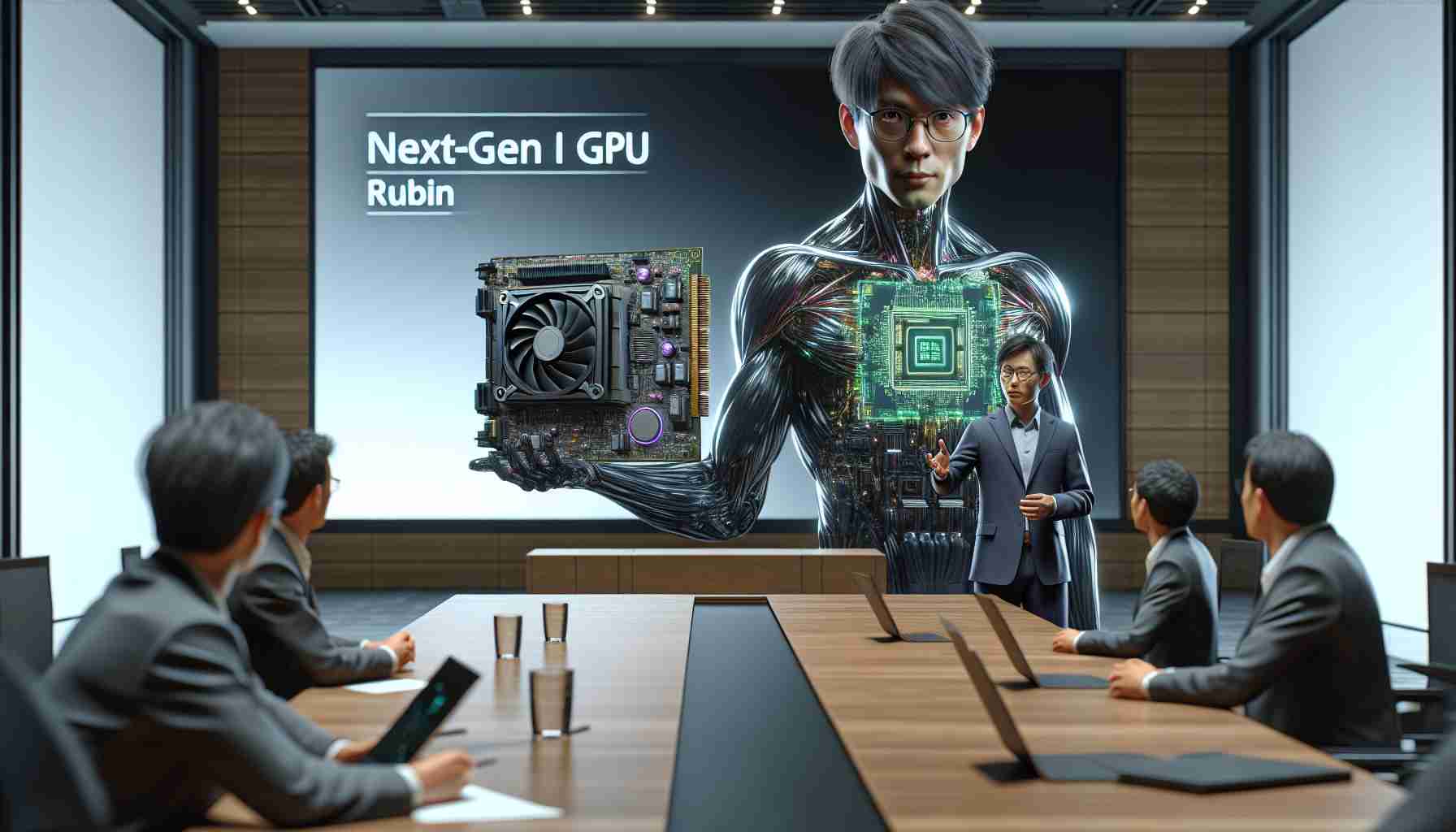NVIDIA, headed by its founder and CEO Jensen Huang, has taken the spotlight at Computex 2024 in Taipei, where he proclaimed the upcoming production of their next-generation artificial intelligence (AI) graphics processor named “Rubin”. With plans to begin mass production in 2026, Huang emphasized the integration of the sixth-generation High Bandwidth Memory (HBM4) within the Rubin GPU, although he withheld detailed specifications.
Taiwanese media outlined the potential inclusion of Taiwan Semiconductor Manufacturing Company’s (TSMC) cutting-edge 3nm process technology in the Rubin GPU, suggesting it will be the inaugural model to employ HBM4. Huang also discussed the commencement of the platform for the previously announced Hopper architecture successor, the Blackwell GPU, aiming to officially implement it soon. Furthermore, the 2025 scheduled Blackwell Ultra GPU is expected to be equipped with fifth-generation HBM, known as HBM3E.
GPUs, recognized for their ability to perform parallel processing, are increasingly crucial in the AI domain, and NVIDIA is not stopping there. Plans reveal that their own CPU, named “Vera,” is set to release soon, and a Rubin Ultra GPU is expected by 2027. During his keynote, Huang articulated an anticipation that NVIDIA will play a pivotal role as AI technologies become integrated with personal computers, expecting an expansion beyond cloud service providers (CSPs) to a broader range of clients, potentially accelerating AI adoption across corporations and governments.
Illustrating the rapid advancement in AI, Huang touched on the concept of “digital humans” capable of interacting with real people. He also showcased the GB200 NVL72 server, produced in collaboration with Taiwan’s Foxconn, and mentioned that the Central Weather Bureau of Taiwan is utilizing NVIDIA’s Earth-2 digital model to enhance the accuracy of climate predictions, including typhoons.
This Computex event not only showcases technological innovations but also demonstrates Huang’s rising popularity, which now rivals that of celebrities in his homeland of Taiwan.
Most Important Questions and Answers:
1. What innovations are expected from NVIDIA’s upcoming “Rubin” AI GPU?
The “Rubin” AI GPU is anticipated to integrate sixth-generation High Bandwidth Memory (HBM4) and potentially incorporate TSMC’s 3nm process technology. It represents a step forward in NVIDIA’s AI technology and capabilities.
2. When is NVIDIA’s “Rubin” AI GPU expected to hit the market?
Mass production of the Rubin AI GPU is scheduled to begin in 2026.
3. How is AI technology in GPUs beneficial?
GPUs are highly efficient at parallel processing tasks, which is essential for AI computations. AI technology in GPUs can lead to advances in digital interactions, such as “digital humans,” and improvements in predictive models, such as the weather prediction enhancements noted by Huang.
Key Challenges or Controversies:
One of the key challenges associated with advanced GPUs like “Rubin” is the complexity of fabrication, especially as nodes shrink to 3nm processes. Ensuring yield and performance at these scales requires significant engineering expertise and investment. Another challenge is the competitive market, where NVIDIA must maintain its technological edge against competitors such as AMD and Intel.
Controversies may arise around the environmental impact of producing and running high-performance computing systems. Energy efficiency and the carbon footprint of data centers using these GPUs can be a concern for environmentally conscious consumers and organizations.
Advantages and Disadvantages:
Advantages:
– Advanced AI performance and capabilities, potentially transforming various industries.
– High-speed memory integration (HBM4) which can offer significant bandwidth improvements for data-intensive tasks.
– Potential performance leap with the adoption of TSMC’s 3nm process technology.
Disadvantages:
– Potential high cost which could limit accessibility to some businesses and individuals.
– Advanced GPUs can have substantial power requirements, leading to increased energy consumption.
Related Links:
NVIDIA
Taiwan Semiconductor Manufacturing Company (TSMC)
Foxconn
Popularity of Jensen Huang:
Jensen Huang’s popularity in Taiwan and beyond is not only a testament to his company’s success but also to the growing interest in AI technologies and their impact on the future. This is further reflected by the attention received at events like Computex, indicating both the influence of NVIDIA and the importance of AI in the global tech landscape.
The source of the article is from the blog papodemusica.com

